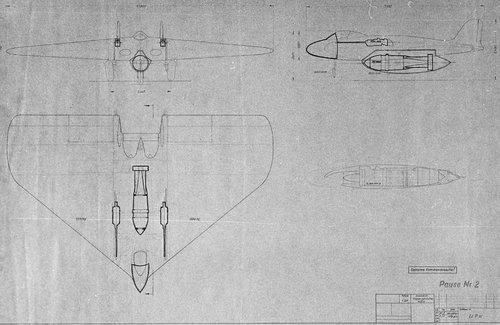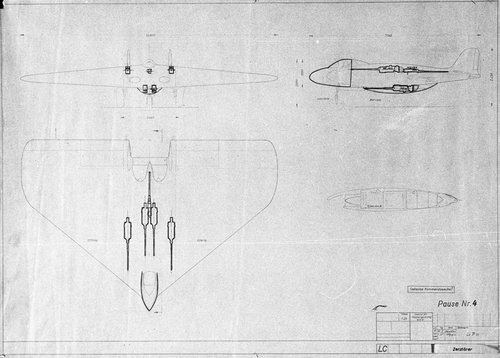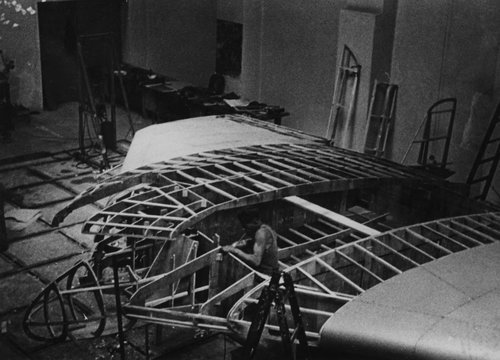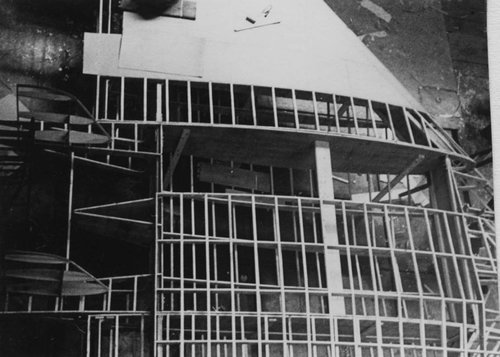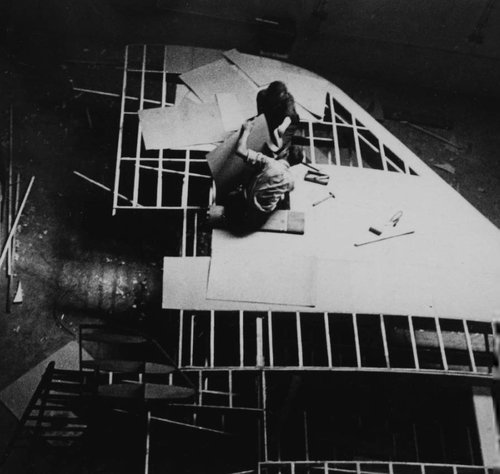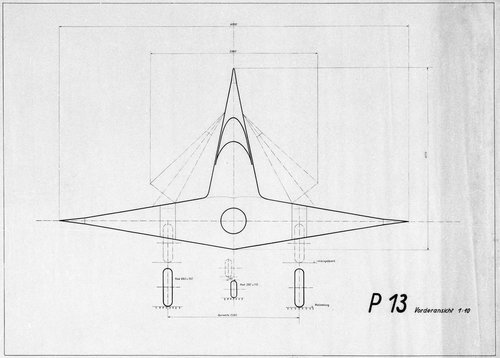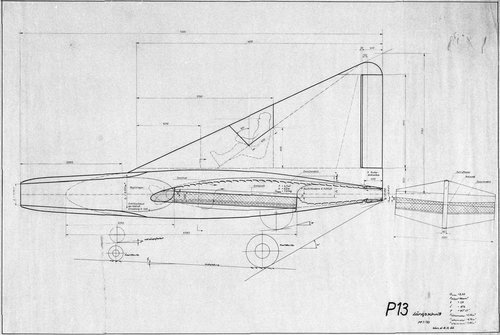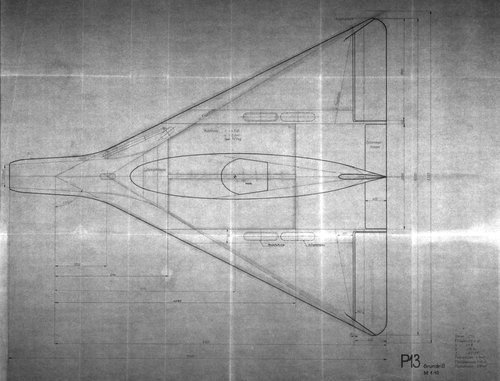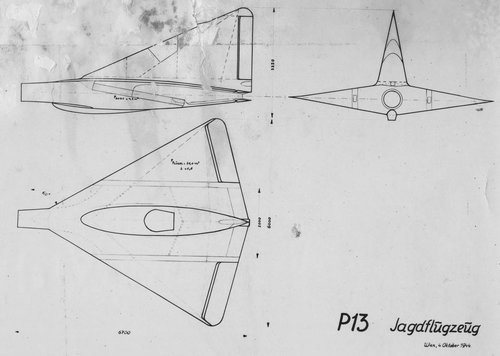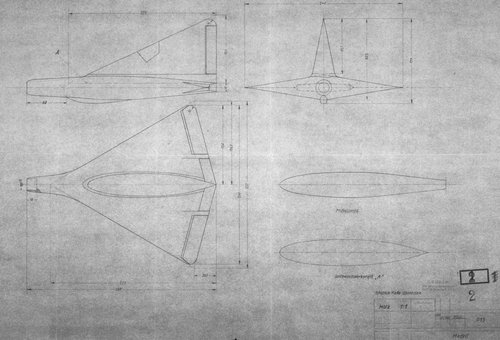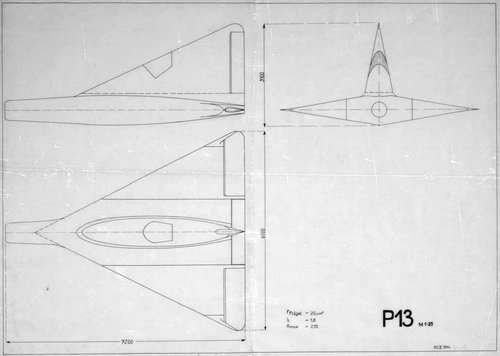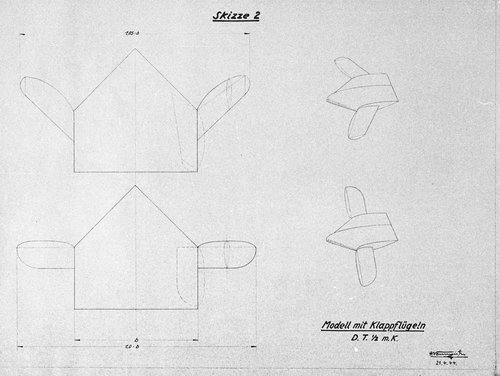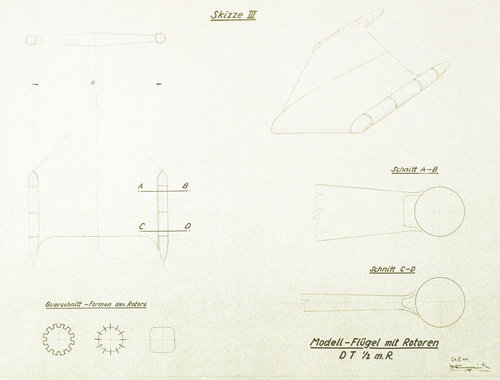You are using an out of date browser. It may not display this or other websites correctly.
You should upgrade or use an alternative browser.
You should upgrade or use an alternative browser.
Lippisch Projects P.12, 13 and 14
- Thread starter KJ_Lesnick
- Start date
Grzesio
ACCESS: Secret
Re: Lippisch P.13A unknown version
There is a lot of mess as far as German rocket fuels are concerned, but I believe, Sv-Stoff was made of 90-98% RFNA (i.e. nitric acid + dinitrogen tetroxide) and 2-10% sulphuric acid.SV-Stoff a mixture 94% nitric acid / 6% dinitrogen tetroxide or 85% nitric acid / 15% sulfuric acid
Re: Little-known Lippisch P-14
Please see
http://www.panzerfux.de/panzerfux/prodpic/1-72-Lippisch-Li-P-14-Unicraft-Models-UCM-72249_b_2.JPG
Please see
http://www.panzerfux.de/panzerfux/prodpic/1-72-Lippisch-Li-P-14-Unicraft-Models-UCM-72249_b_2.JPG
- Joined
- 25 June 2009
- Messages
- 14,732
- Reaction score
- 6,070
Re: Little-known Lippisch P-14
Can this topic be renamed properly, please? Little-known instead of "low known", P. 14 (or P 14) and not "P-14", but especially Lippisch instead of Lippish. Thanks.
Can this topic be renamed properly, please? Little-known instead of "low known", P. 14 (or P 14) and not "P-14", but especially Lippisch instead of Lippish. Thanks.
Vladimir
I really should change my personal text
- Joined
- 22 September 2015
- Messages
- 321
- Reaction score
- 52
Re: Little-known Lippisch P-14
How to rename Skyblazer?
Skyblazer said:Can this topic be renamed properly, please? Little-known instead of "low known", P. 14 (or P 14) and not "P-14", but especially Lippisch instead of Lippish. Thanks.
How to rename Skyblazer?
- Joined
- 25 June 2009
- Messages
- 14,732
- Reaction score
- 6,070
Re: Lippisch P.13A unknown version
Lippich... Lippish... Is it so difficult to make an effort spelling someone's name properly?
When I was a moderator I simply would fix such mistakes and not comment on them. Sometimes dozens a month... Now I can no longer do anything about them. And I've noticed a rise of misspelt names and designations lately.
Besides the respect due to a person by spelling their name accurately, it's also a matter of finding the stuff in future forum searches. Thanks.
Lippich... Lippish... Is it so difficult to make an effort spelling someone's name properly?
When I was a moderator I simply would fix such mistakes and not comment on them. Sometimes dozens a month... Now I can no longer do anything about them. And I've noticed a rise of misspelt names and designations lately.
Besides the respect due to a person by spelling their name accurately, it's also a matter of finding the stuff in future forum searches. Thanks.
- Joined
- 25 June 2009
- Messages
- 14,732
- Reaction score
- 6,070
Re: Little-known Lippisch P-14
Thanks for asking. I wasn't specifically aiming my comment at you (after all, not everyone is expected to be good at spelling!) but rather at moderators on this forum who've let far too many typos exist in topic titles lately.
If you edit your initial post (being the topic's creator) you can modify your title in it and it automatically changes the topic's title. The wrong title will remain in the replies, though, as only moderators can fix that.
Vladimir said:Skyblazer said:Can this topic be renamed properly, please? Little-known instead of "low known", P. 14 (or P 14) and not "P-14", but especially Lippisch instead of Lippish. Thanks.
How to rename Skyblazer?
Thanks for asking. I wasn't specifically aiming my comment at you (after all, not everyone is expected to be good at spelling!) but rather at moderators on this forum who've let far too many typos exist in topic titles lately.
If you edit your initial post (being the topic's creator) you can modify your title in it and it automatically changes the topic's title. The wrong title will remain in the replies, though, as only moderators can fix that.
XP67_Moonbat
ACCESS: Top Secret
- Joined
- 16 January 2008
- Messages
- 2,270
- Reaction score
- 534
Re: Lippisch P.13A unknown version
Lippich, Lipichs, Liipish!!! Nòn, Nòn, Nòn!

Lippich, Lipichs, Liipish!!! Nòn, Nòn, Nòn!
Re: Lippisch P.13A unknown version



Vladimir
I really should change my personal text
- Joined
- 22 September 2015
- Messages
- 321
- Reaction score
- 52
alfakilo
ACCESS: Confidential
- Joined
- 18 October 2009
- Messages
- 74
- Reaction score
- 14
Re: Lippisch P.13A unknown version
I'm not sure what is allowed to be posted here...can a mod explain?
Vladimir said:Thanks, alfakilo. Could You please post that page? Thanks!
I'm not sure what is allowed to be posted here...can a mod explain?
- Joined
- 11 March 2006
- Messages
- 8,622
- Reaction score
- 3,779
Re: Lippisch P.13A unknown version
If it is a current and still available publication no scans or pictures should be posted, as long
as there's no explicit permission of the copyright holder/author.
But in cases like this one, maybe a short summary in own words would be sufficient ?
If it is a current and still available publication no scans or pictures should be posted, as long
as there's no explicit permission of the copyright holder/author.
But in cases like this one, maybe a short summary in own words would be sufficient ?
alfakilo
ACCESS: Confidential
- Joined
- 18 October 2009
- Messages
- 74
- Reaction score
- 14
Re: Lippisch P.13A unknown version
Thank you...I wasn't able to find that using the search feature, and having seen cautions in the past, I didn't want to violate any rules.
The book describes the proposal as being very much like the Lippisch in appearance. It was to be launched from a B-29 and was powered by two ramjets and an externally mounted rocket engine and was expected to be mildly supersonic in a descent.
The book is available from Amazon and should be thoroughly enjoyed by everyone with an interest in prototypes and proposals for the early years of US jet fighters.
Jemiba said:If it is a current and still available publication no scans or pictures should be posted, as long
as there's no explicit permission of the copyright holder/author.
But in cases like this one, maybe a short summary in own words would be sufficient ?
Thank you...I wasn't able to find that using the search feature, and having seen cautions in the past, I didn't want to violate any rules.
The book describes the proposal as being very much like the Lippisch in appearance. It was to be launched from a B-29 and was powered by two ramjets and an externally mounted rocket engine and was expected to be mildly supersonic in a descent.
The book is available from Amazon and should be thoroughly enjoyed by everyone with an interest in prototypes and proposals for the early years of US jet fighters.
XP67_Moonbat
ACCESS: Top Secret
- Joined
- 16 January 2008
- Messages
- 2,270
- Reaction score
- 534
Re: Lippisch P.13A unknown version
Guess you'll have to book now, huh?
Guess you'll have to book now, huh?
- Joined
- 26 May 2006
- Messages
- 34,828
- Reaction score
- 15,709
Re: Lippisch P.12 and P.13 projects
From my file,
the Lippisch supersonic delta wing fighter Project was an athodyd-propelled aircraft bearing a general
resemblance to the Lippisch P.13,but without a large dorsal fin.
From my file,
the Lippisch supersonic delta wing fighter Project was an athodyd-propelled aircraft bearing a general
resemblance to the Lippisch P.13,but without a large dorsal fin.
- Joined
- 26 May 2006
- Messages
- 34,828
- Reaction score
- 15,709
- Joined
- 26 May 2006
- Messages
- 34,828
- Reaction score
- 15,709
Re: Lippisch P.12 and P.13 projects
Jet Planes of the Third Reich - The Secret Projects-volume one
hesham said:From my file,
the Lippisch supersonic delta wing fighter Project was an athodyd-propelled aircraft bearing a general
resemblance to the Lippisch P.13,but without a large dorsal fin.
Jet Planes of the Third Reich - The Secret Projects-volume one
Attachments
Sherman Tank
I don't want to change my personal text
- Joined
- 14 October 2016
- Messages
- 235
- Reaction score
- 211
Could the coal dust-fired engine actually work in practice?
- Joined
- 26 May 2006
- Messages
- 34,828
- Reaction score
- 15,709
Sherman Tank said:Could the coal dust-fired engine actually work in practice?
Maybe,but a supersonic fighter in 1945 was a very odd.
Sherman Tank
I don't want to change my personal text
- Joined
- 14 October 2016
- Messages
- 235
- Reaction score
- 211
Yeah, that's my completely ignorant opinion as well. I can imagine that maybe the coal engines could've maybe provided enough thrush for powered flight, but there's no real chance it could break the sound barrier.
I would, however, be very interested to be shown to be wrong.
I would, however, be very interested to be shown to be wrong.
- Joined
- 11 March 2006
- Messages
- 8,622
- Reaction score
- 3,779
Those are two different points, I think:
- coal-dust firing was first used during the first part of the 19th century and from then on for the firings
of steam engines and turbines. So, the technology principally wasn't new and with enough R & D it may
have been possible to build a working propulsion system for an aircraft. "enough R & D" probably means
several years, especially if we consider the chronic lack of engineering capacity in Germany, not only during
the last years of WW II, but more or less from the resurrection of its aviation industry.
- Achieving a speed of more, than Mach 1 was uncharted territory back then, and the German designers,
including Lippisch had no solid results. But with enough R & D, it certainly could have been done, as the
development of the Convair delta wing aircraft may show. Those started from the work of Alexander Lippisch
and after about 4 years from the beginning, the sound barrier was broken, hardly and in a dive only ...
So, both points probably could have been achieved in a Germany during peacetime and without financial limits
and with no deadlines. Of course, it's quite unprobable, that such an aircraft would have been developed in
such a Germany at all ... :
- coal-dust firing was first used during the first part of the 19th century and from then on for the firings
of steam engines and turbines. So, the technology principally wasn't new and with enough R & D it may
have been possible to build a working propulsion system for an aircraft. "enough R & D" probably means
several years, especially if we consider the chronic lack of engineering capacity in Germany, not only during
the last years of WW II, but more or less from the resurrection of its aviation industry.
- Achieving a speed of more, than Mach 1 was uncharted territory back then, and the German designers,
including Lippisch had no solid results. But with enough R & D, it certainly could have been done, as the
development of the Convair delta wing aircraft may show. Those started from the work of Alexander Lippisch
and after about 4 years from the beginning, the sound barrier was broken, hardly and in a dive only ...
So, both points probably could have been achieved in a Germany during peacetime and without financial limits
and with no deadlines. Of course, it's quite unprobable, that such an aircraft would have been developed in
such a Germany at all ... :
Lippisch P.11 additional info-1
Attachments
Lippisch P.11 additional info- 2
Attachments
Lippisch P.11 additional info- 3
Attachments
Grzesio
ACCESS: Secret
Wasn't it supposed to have a warhead made of Nipolit?
Similar threads
-
-
-
-
A collection of Luftwaffe oddities from "L'aviazone nuova"
- Started by lippischh
- Replies: 12
-
New Fonthill Book - Rocket Interceptors 1941-1947
- Started by Justo Miranda
- Replies: 2














